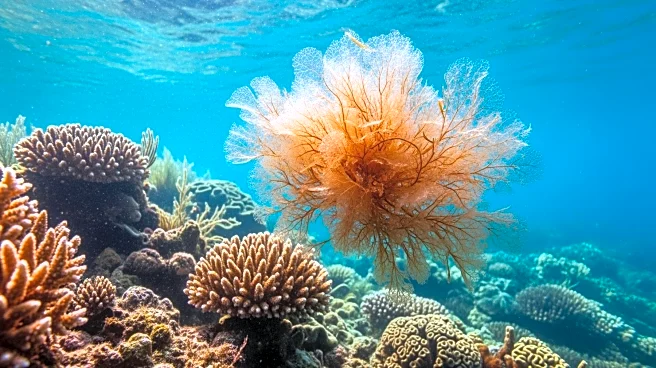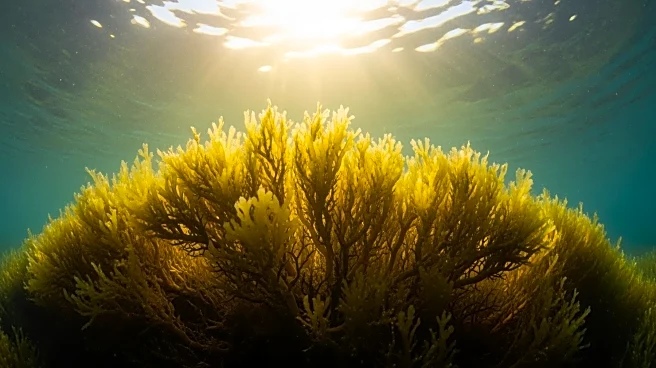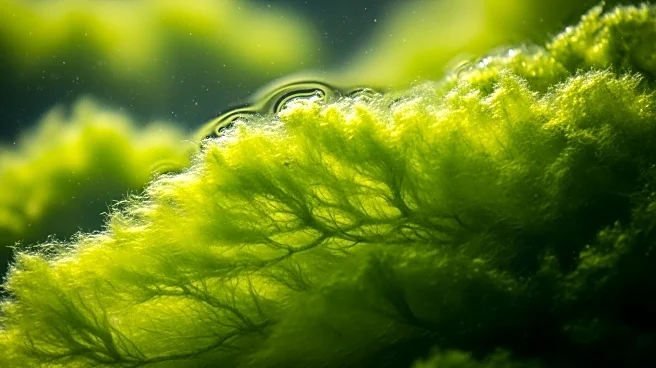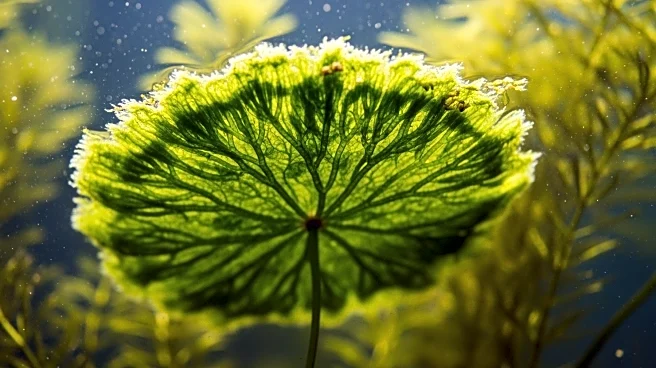What's Happening?
Researchers from Osaka Metropolitan University have discovered how marine green algae protect themselves from intense sunlight during photosynthesis. The study reveals that a pigment called siphonein helps
algae efficiently photosynthesize without damage from excess light. This pigment, found in the light-harvesting antenna complex of Codium fragile, allows algae to use green light for photosynthesis while preventing harmful chlorophyll triplet states. The research highlights the algae's ability to neutralize damaging energy through triplet-triplet energy transfer, offering insights into their unique photoprotective mechanisms.
Why It's Important?
Understanding how algae protect themselves from sunlight has implications for bio-inspired solar technology. By mimicking these natural processes, researchers can develop more efficient and durable solar cells that resist light damage. This knowledge contributes to advancements in renewable energy solutions, potentially leading to more sustainable and resilient energy systems. The study also enhances our understanding of photosynthesis, a fundamental biological process, and its adaptation to different environmental conditions.
What's Next?
Future research may focus on further clarifying the structural characteristics of carotenoids that enhance quenching efficiency. This could lead to the molecular design of pigments that optimize photosynthetic antennae, improving solar energy capture and conversion. The findings may inspire new approaches to developing solar technologies that incorporate natural photoprotective strategies.
Beyond the Headlines
The study of algae's sun protection mechanisms highlights the importance of interdisciplinary research in addressing environmental challenges. By combining biology, chemistry, and engineering, scientists can develop innovative solutions that draw inspiration from nature. This approach underscores the potential of biomimicry in advancing technology and sustainability.











